The complex provides low-inertia regulation of air temperature, practically independent of the vehicle speed. The amount of air entering the passenger compartment is mainly determined by the mode of operation of the fan, so it must be turned on even while driving at high speed.
Outside air can enter the passenger compartment through the door windows with the windows down and the air blower located in front of the windshield. The air from the blower can enter the passenger compartment through the windshield blower nozzles, side and center nozzles, and also through the lower nozzles of the heater housing.
The volume, temperature, direction and intensity of air flows are regulated by switches installed in the heating system control unit (conditioning) and ventilation.
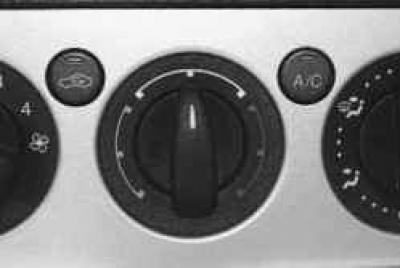
To change the temperature of the air entering the passenger compartment, turn the temperature control knob. The blue part of the scale corresponds to the supply of the most cooled air, the red part corresponds to the most heated air. With the handle in the middle position, air is supplied to the passenger compartment at ambient temperature (white part of the scale).

To increase the intensity of the air supply to the passenger compartment while driving and ensure the supply of air to a stationary vehicle, use the switch handle to turn on one of the four modes of operation of the air blower fan.
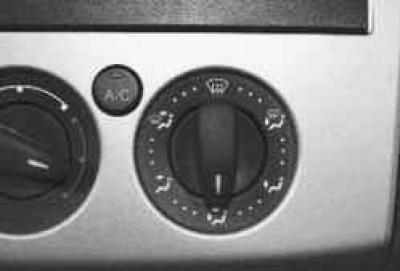
To change the direction of the air supply, select one of the following options with the air distribution knob (clockwise):
- air supply to the upper and lower parts of the cabin (through the side and central nozzles of the instrument panel, as well as through the lower nozzles of the heater housing);
- air supply to the upper part of the cabin (through the side and center nozzles of the instrument panel);
– air supply to the upper part of the passenger compartment and to the windshield (through the side and center nozzles of the instrument panel and windshield blower nozzles);
– air supply to the windshield (through the windshield blower nozzles);
– air supply to the lower part of the passenger compartment and to the windshield (through the lower nozzles of the heater housing and the windshield blower nozzles);
- air supply to the lower part of the cabin (through the lower nozzles of the heater housing).
The regulator knob can be set to intermediate positions for more precise adjustment.
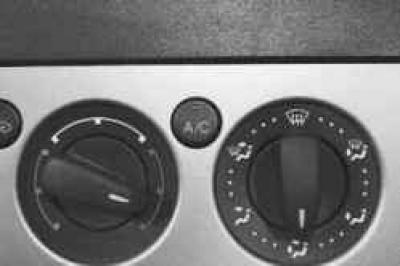
To cool the air entering the car interior, press the air conditioner on button (if it is installed on the car).
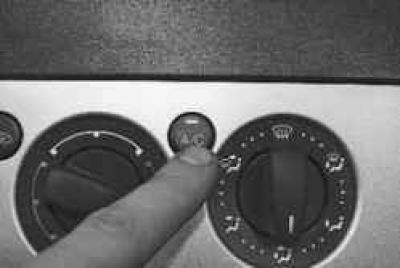
When the air conditioner is turned on, the control lamp in the button will light up. To turn off the air conditioner, press the button again (the control lamp will go out).
WARNING: Turning on the A/C while the engine is running under severe conditions (long climbs, heavy city traffic, etc.) may cause the engine to overheat. Watch the readings of the coolant temperature gauge: if the temperature exceeds the permissible value, turn off the air conditioner. During long trips in city traffic, the efficiency of the air conditioner may be reduced due to the intense thermal conditions of the engine. This is not a malfunction, the air conditioner will still operate efficiently when driving under normal road conditions.
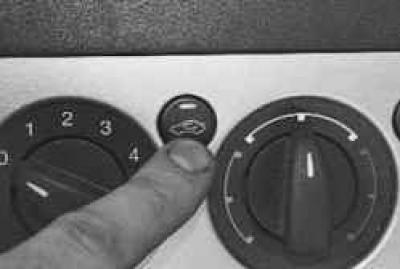
To turn on the recirculation mode, press the corresponding button (indicator lamp will light up). When the recirculation mode is on, outside air does not enter the passenger compartment, and the air blower fan circulates the air inside the passenger compartment. This mode is used to quickly warm up the cabin in the cold season, as well as with increased dust and gas contamination of the surrounding air.
WARNING: It is not recommended to use the recirculation mode for a long time while the car is moving, as this usually leads to fogging of the windows.
Depending on the various combinations of switching on the switches of the control unit, the heating and ventilation system operates in the following basic modes:
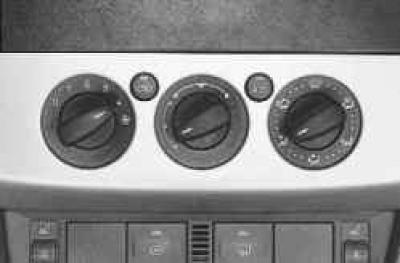
– maximum cooling mode. Used in hot weather and after a long stay in the sun to quickly cool the air in the cabin. In this case, before turning on the air conditioner, it is recommended to briefly open the windows to remove the heated air from the passenger compartment. Air conditioning and air recirculation mode must be turned on;
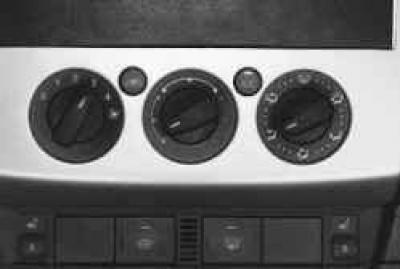
– normal cooling mode. Used when traveling around the city and outside the city in moderately warm weather. The air conditioner must be on, the recirculation mode must be off;
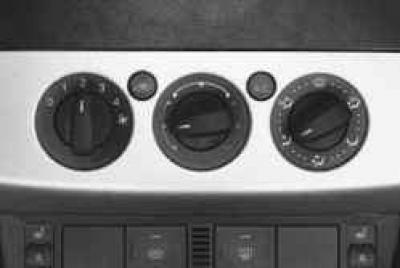
– ventilation mode. Used to ventilate the interior. The speed of the heater fan can be changed at will;
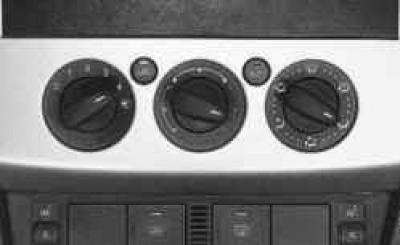
– maximum heating mode. It is used at very low ambient temperatures and to quickly warm up the air in the cabin after a long parking. Air conditioning and recirculation mode must be turned off;
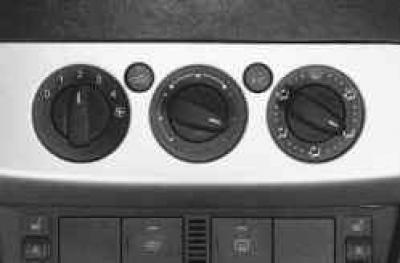
– normal heating mode. It is used in the cold season to maintain the optimum air temperature in the cabin after it has been intensively warmed up in the maximum heating mode. Air conditioning and air recirculation mode must be turned off;
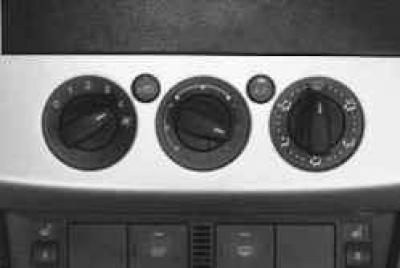
– mode for removing moisture or frost from the windshield. It is used to quickly eliminate fogging of glasses at high humidity. The air conditioner must be on and the recirculation mode must be off;
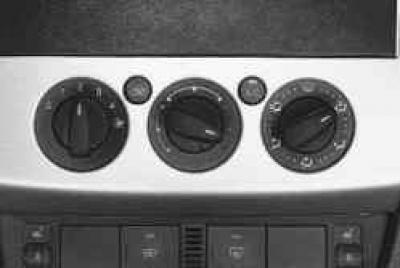
– interior air humidity reduction mode. Turning on the air conditioner helps to reduce the humidity in the cabin, which leads to faster cleaning of windows from fogging.
NOTE: In order to prevent the windows from misting up in rainy weather, turn on the blower mode when the heater is off, as the difference in the temperature of the glass surface and the air supplied can cause moisture condensation.
GOOD ADVICE: For more efficient operation of ventilation and heating at a vehicle speed of less than 50 km/h and when driving through especially dusty sections of roads with closed windows (to create excess air pressure in the cabin, preventing dust suction) We recommend turning on the heater fan with the switch at low or maximum speed.
USEFUL ADVICE: To quickly eliminate fogging of the rear window and free it from ice and snow, turn on the glass heating.
GOOD ADVICE: If you do not use the air conditioner for a long time, it is necessary to turn it on briefly once a week with the engine running to restore the lubrication layer on the compressor parts and seals.
Visitor comments